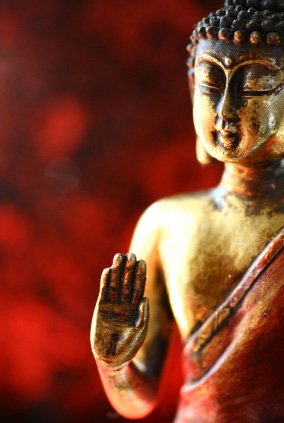 |
 |
 1. Tailor new information to fit your learning style.
If you learn by hearing, repeat a person's name back to them throughout
a conversation to help yourself remember it. If you are visual, write
things down so that you can read them back to yourself. If you learn by
doing, practice a new activity several times after learning it. 1. Tailor new information to fit your learning style.
If you learn by hearing, repeat a person's name back to them throughout
a conversation to help yourself remember it. If you are visual, write
things down so that you can read them back to yourself. If you learn by
doing, practice a new activity several times after learning it.
2. Connect your memories.
Try to incorporate new information in a way that connects to other
knowledge you already have. If you are building on existing knowledge,
focus on that connection. Many times a simple connection such as "oh,
Mary is from my hometown" or "her office is right next to my favorite
chocolate shop" can help you to remember new facts. Organizing
information (both mentally and in the physical realm if you've written
it down) can help you to draw even more connections.
3. Exercise your brain.
While your brain isn't a muscle per se, the same "use it or lose it"
applies in this case. Take up brain-challenging puzzles, learn a new
skill, or spend a day doing everything left-handed (right-handed for
those of you who are left-handed) to help your brain stay quick.
4. Get your senses involved.
Sight, smell, hearing, taste, and touch all play a part in forming
memories. If you read something you want to remember, say it out loud.
Remember a meal by tasting, touching, and smelling your food. Decide
what color something might be or how it might smell – the simple act of
doing so will help your brain record that information in several
different ways, which improves your chances of recalling it later.
5. Finally, pay attention.
This means focusing all of your attention on what you are learning. No
multi-tasking, no eating while reading, no surfing the Internet while
talking, etc. Your mind cycles through different thoughts ever few
seconds, so you need to made a conscious effort to keep your focus on
the task at hand.
|
|
 |
 |
Many
people who are interested in hypnotherapy have questions about what the
process of being hypnotized is like. It is an unfortunate fact that
stage hypnosis acts have greatly altered the public's perception of
hypnosis. In fact, a person undergoing hypnotherapy experiences almost
the exact opposite of the brainwashed image of the person on stage who
is quacking like a duck at the mercy of the hypnotist. 
Hypnosis
is a state of heightened awareness. While under hypnosis a person is
neither unconscious nor out of control. The state of hypnosis is one of
deep relaxation, and one that can be entered into or out of at will. In
this state, a person is able to make decisions and access their greater
truth. Ultimately, their susceptibility to suggestions is only true if
those suggestions are, in fact, in alignment with what that person
truly desires. It is a powerful tool that allows people to access their
deeper, truer self, far past the idle chatter of the monkey brain.
People
experience a number of things during hypnosis. Most feel very peaceful
and secure. Some people feel very light and as if they were floating,
while others feel as if their limbs are very heavy. As the brain enters
slower wave patterns, breathing usually slows down and all anxiety
disappears. As there is no actually "falling asleep" there is no need
to "wake up" from hypnosis, one simply brings their conscious back to
the present moment. With continued practice, it will become easier and
easier to access the subconscious self, and it will always remain easy
to return right back to consciousness as well.
|
|
 |
 |

Mindfulness
is something that most all of us here on Earth have the opportunity to
work on. This is why so many spiritual teachers emerge to teach us
different aspects of mindful living. To be mindful is to be aware,
thoughtful, and fully present. It is, in this day and age, particularly
difficult to be fully present in any given moment. Thoughts of the
past, of the future, of what you need to get or do, or what you've
already done – all of these things prevent you from living in the
moment.
To discover mindfulness, think of the way that children
interact with the world. Children are capable of being very strongly
present and focused on the current moment. When exploring the world
around them, they aren't thinking of anything other than what they are
experiencing. Their entire world can be reduced to a dandelion,
something that most adul
ts would struggle with.
Another way you can watch children demonstrate presence is when they
fall down. They may fall, but unless they receive negative attention as
a result, they just keep on going, continually moving on to the next
thing in their journey.
The next time you feel your mind racing ahead of you, stop and practice
mindfulness. Take deep breaths, focusing on both the inhalation and the
exhalation – and the moments in between. If thoughts occur to you, take
note of the thought and then return to the focus on your breath. Once
you feel that you are back in the present moment you can consider any
thoughts that may have occurred to you. Sometimes, all you need to do
is acknowledge a thought and dismiss it. Being mindful can help you
achieve your goals, find a greater sense of peace in the world, and
even reclaim some of the joy you experienced as a child exploring the
great wide world.
|
|
 |
|
|
|
 |
|
In This Issue:
|
|
 |
|
This Month
|
Name

Phone
Website

|

|
|
Summer Snacks!
|
Summer
is a wonderful time to eat fresh food right out of the garden or from
the farmer's market. Don't even THINK about turning your stove on this
time of year when you're looking for a snack. Instead, munch on
something fresh!
Veggie Plate: Throw a bunch of
summer veggies on a plate and munch away. Dips are great, but be aware
that many conventional veggie dips are extremely high in fat.
Fruit Bowl: Cut up a bunch of your favorite summer fruits, grab and fork and start eating. No alterations required!
Summer Food on the Go: If you need food for later, grab fruit and cheese, or a few choice veggies rolled up in a whole grain tortilla to eat anytime.

|

|
|
Social Anxiety
|
Social
anxiety affects many people, and in a very profound way. Those with
social anxiety experience anxiety almost solely when in social
situations, such as being introduced to new people, speaking in public,
interacting with authority figures, or when attention is called to
them. They experience the full range of anxiety symptoms, such as
sweating, dry mouth, racing heart, blushing, etc. Others may perceive
them as being shy, standoffish, or aloof when in fact they are simply
too fearful or nervous to interact normally. Fortunately, there is
great success in treating social anxiety with a number of modalities,
including hypnotherapy and cognitive-behavioral therapy.

|

|
|
Yoga Pose For Balance and Clarity: Vrksasana
|
Vrksasana, also known as tree pose, enhances strength, clarity,
balance, and concentration. To stand in tree pose, put your weight into
one foot, and place the other foot flat against the opposite thigh,
with your leg turned out from the hip. The foot should be placed as
high up as is comfortable, but never pressing directly against the
knee. Then, lift your arms into prayer pose and focus your eyes just
above eye level. After taking several breaths in this position, press
the palms together and lift the arms straight overhead. Do not allow
the shoulders to rise up towards the ears when the arms lift. Take
several breaths and then bring the hands back down to prayer pose.
Gently come out of tree pose and take a breath before entering tree
pose on the other leg.

|
|
 |
